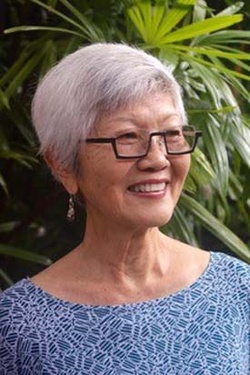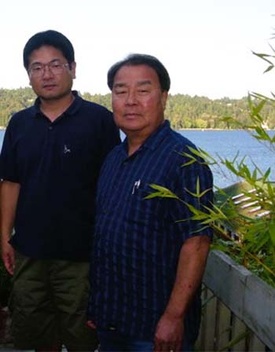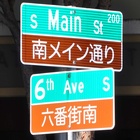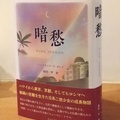Juliet S. Kono's novel "Darkness" depicts a Hawaii-born second-generation Japanese-American woman surviving a life of hardships during and after the war. Ippei Maeda, a scholar of American literature, translated the novel over the course of 10 years and published it at the end of last year. We asked him about the appeal of the novel and Japanese-American literature.
* * * * *
The spread of Japanese literature
--Previously, in this column, I introduced a work called " After Dark " by Japanese-Australian author Christine Piper. Are works with "Japanese-American" themes coming from Japanese communities in various countries? Or are they more prominent in the United States?
Maeda: I think "Japanese" can be defined more broadly. I have worked at a teacher's college for many years. In the course of my work, I often had to read the Teacher Certification Act, which specifies how many credits of designated courses must be obtained to obtain a license to teach a subject at school. In the case of the subject of English, the courses include English Linguistics, British and American Literature, and English Communication. Among these, British and American Literature was changed to "English Literature" a few years ago.
In English education, English is not only recognized as the language of the UK or the US, but also as an international common language for communication between people whose native language is different. Similarly, I think that literature in English education should not only cover British literature or American literature, but also literature from English-speaking countries in a broad sense.
However, in my opinion, Murakami Haruki's works can also be recognized as English literature, because they have been translated into English by Jay Rubin. If we consider Murakami Haruki's works in the context of English literature, we might be able to call them "Japanese" literature in English literature. This point is something that needs to be discussed further.
I've gotten a bit carried away, but there are particularly many people of Japanese descent in the Americas and Southeast Asia, so it would be great to learn about art in a broad sense, including the literature of these people.
There were Japanese immigrants in Australia, and many Japanese were employed in harvesting pearl oysters, which are used to make buttons. Ryotaro Shiba described this in his novel "Thursday Island Night Party." A fair amount of so-called Australian literature has also been translated into Japanese, so if Japanese-Australian literature were introduced in Japan, the chemistry between the two might help Australians recognize Japanese "English literature."
I haven't studied it enough to be able to speak specifically about it. However, it is natural that Japanese people are first interested in Japanese Americans, given the large number of Japanese people, the size and influence of the country, its strong ability to communicate, the English language, and the presence of the English Literature Department in the Faculty of Letters. In particular, the important theme of internment is important for research and creation. Moreover, Japanese American literature contains many excellent and fascinating works, such as "No-No Boy," Monica Sonne's semi-autobiography "Nisei no Musume" and Hisae Yamamoto's short stories.
--I think the definition of "Japanese-American" is difficult and vague. If there is a genre called "Japanese-American literature," what kind of work would be called that?
Maeda: It's certainly difficult, and I think the Nikkei genre can be approached from a variety of angles. To take it to the extreme, the concept of Nikkei may become diluted in many fields in the near future. As intermarriage and other intermingling between different races and ethnicities progresses, the number of people who are "purely" Nikkei will decrease, and the concept of Nikkei will change.
As I mentioned earlier about "English literature" in the Teacher Certification Act, the definition is not simply a genre definition of literature created by Japanese immigrants and their descendants, but rather it is becoming more and more diffuse and diluted. In the world of English literature, the English translations of Murakami Haruki, which I introduced earlier, may come to be called Nikkei. It may also be possible to talk about the globalization of Nikkei.
Recently, a collection of essays titled "Asian Transborder Literature" was published. This research attempts to reexamine Asian literature beyond the traditional frameworks of ethnic/national consciousness and English-centrism, as well as Western-centered globalization. This means that the borders of nations, ethnicities, and races are becoming relative. Therefore, my idea that the framework of the genre of Japanese literature in the traditional sense is becoming diffused and diluted may not be entirely off the mark.
--Mr. Kono, you were born and raised in Hawaii and are active as a writer living in Hawaii. Is there any Japanese literature in Hawaii?
Maeda: I think the recognition of Hawaiian literature is quite recent, especially at the researcher level. My mentor, Steve Sumida, a professor at the University of Washington, introduced and discussed Hawaiian literature and Japanese Hawaiian literature in books such as And the View from the Shore: Literay Traditions of Hawai'i (2014). I think he was one of the pioneers.
If there was one representative Japanese Hawaiian literary author, it would be Milton Murayama, a native of Maui who is known for novels such as "All I Asking for Is My Body." In addition, there are many other literary works by Japanese Hawaiians.
What's important is that the communication from Hawaii and the reception in Japan create a chemistry, and Hawaiian literature and Japanese Hawaiian literature become recognized in Japan. To achieve this, I think it is important that they are translated and published in Japan first, and that their existence becomes known to the general readership. This was also my thought when I translated Anshuu. I look forward to the translation of Milton Murayama's works.
--There have been many works written about the wartime internment of Japanese and Japanese-Americans in the United States and Canada. It seems to me that these works have tended to be evaluated as literary works rather than as critical essays from a social perspective, such as on immigration and Japanese-American issues. What are your thoughts on this point?
Maeda: I think it was in the 1960s, mainly at universities on the West Coast, that historical research on racial minorities was organized and incorporated into the curriculum at American universities. The University of Washington in Seattle, where I studied, had a department called "American Ethnic Studies," which offered research and education on African Americans, Asians, Chicanos, Hispanics, Native Americans, and Pacific Islanders.
Steve Sumida and others have been researching and teaching Japanese American history and literature in this department. As the view of history has diversified from a white-centered perspective to the history, society, and culture of minorities, it is only natural that research and teaching of history, society, and culture come first. In order to properly read literature by racial minorities, it is essential to study such history, society, and culture. It may be difficult to understand "No-No Boy" without basic knowledge about Japanese Americans.
However, when reading a story with a second-generation Japanese-American as the protagonist, for example, reading it from a social perspective, such as racial discrimination, feelings of inferiority, the desire to assimilate into white society, internment camps, war brides, and the friction between first-generation and second-generation Japanese-Americans, doesn't that result in homogenizing Japanese-American literature on a social or cultural level? Because literature portrays people as members of a nation, ethnicity, or society, I believe it depicts the personal thoughts, feelings, and sensations of an individual who cannot be homogenized using the terms mentioned above. Therefore, I think it is wrong to reduce literary works to sociology or history.
When evaluating a literary work, I think it is necessary to differentiate it as the personal story of one person. At the risk of being misunderstood, I think that contemporary literary studies tend to treat literary works as material for historical and social studies. The personal suffering of Ichiro, the protagonist of "No-No Boy," may not be included in such studies.
Continued >>
(cc) DN site-wide licensing statement








